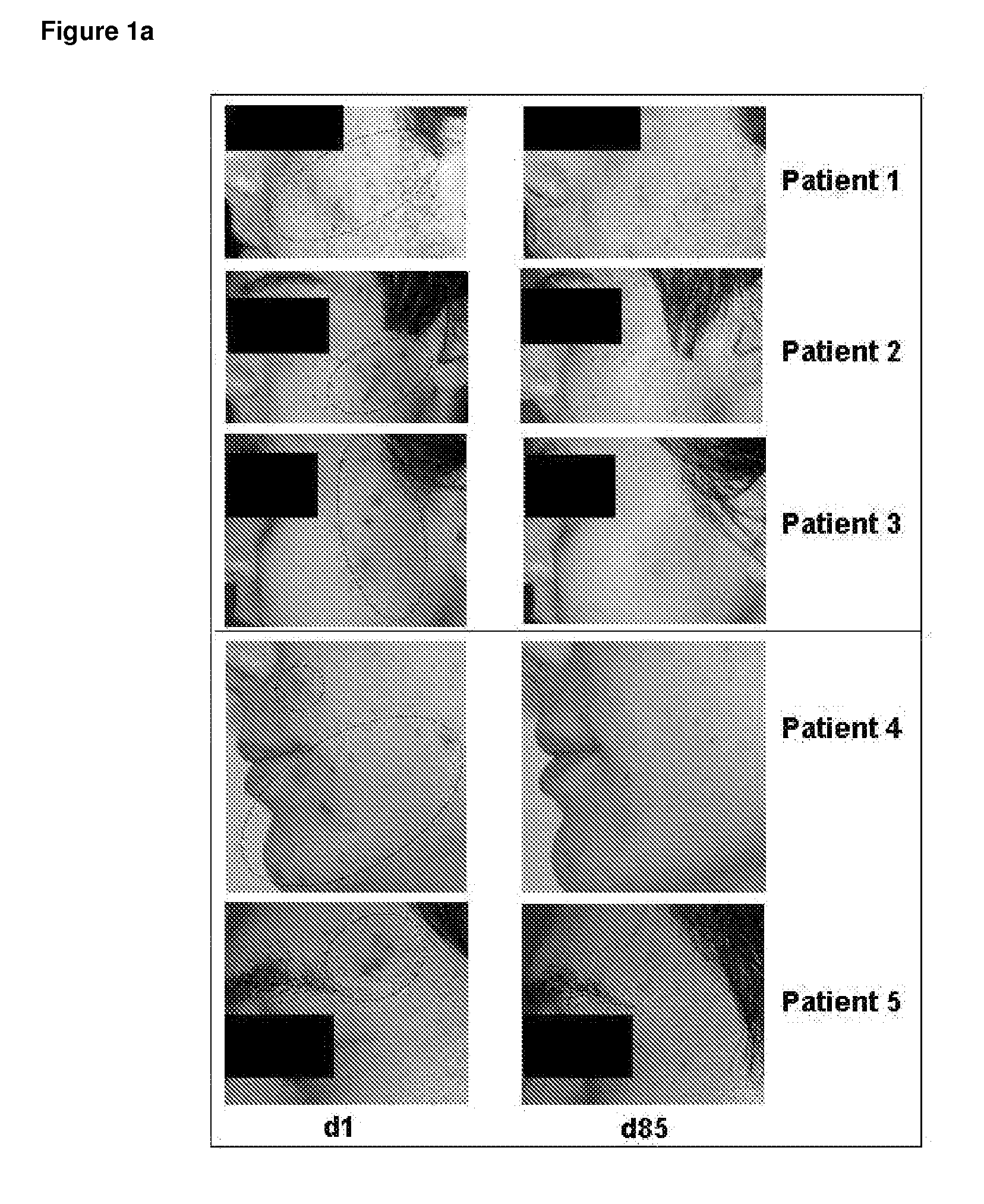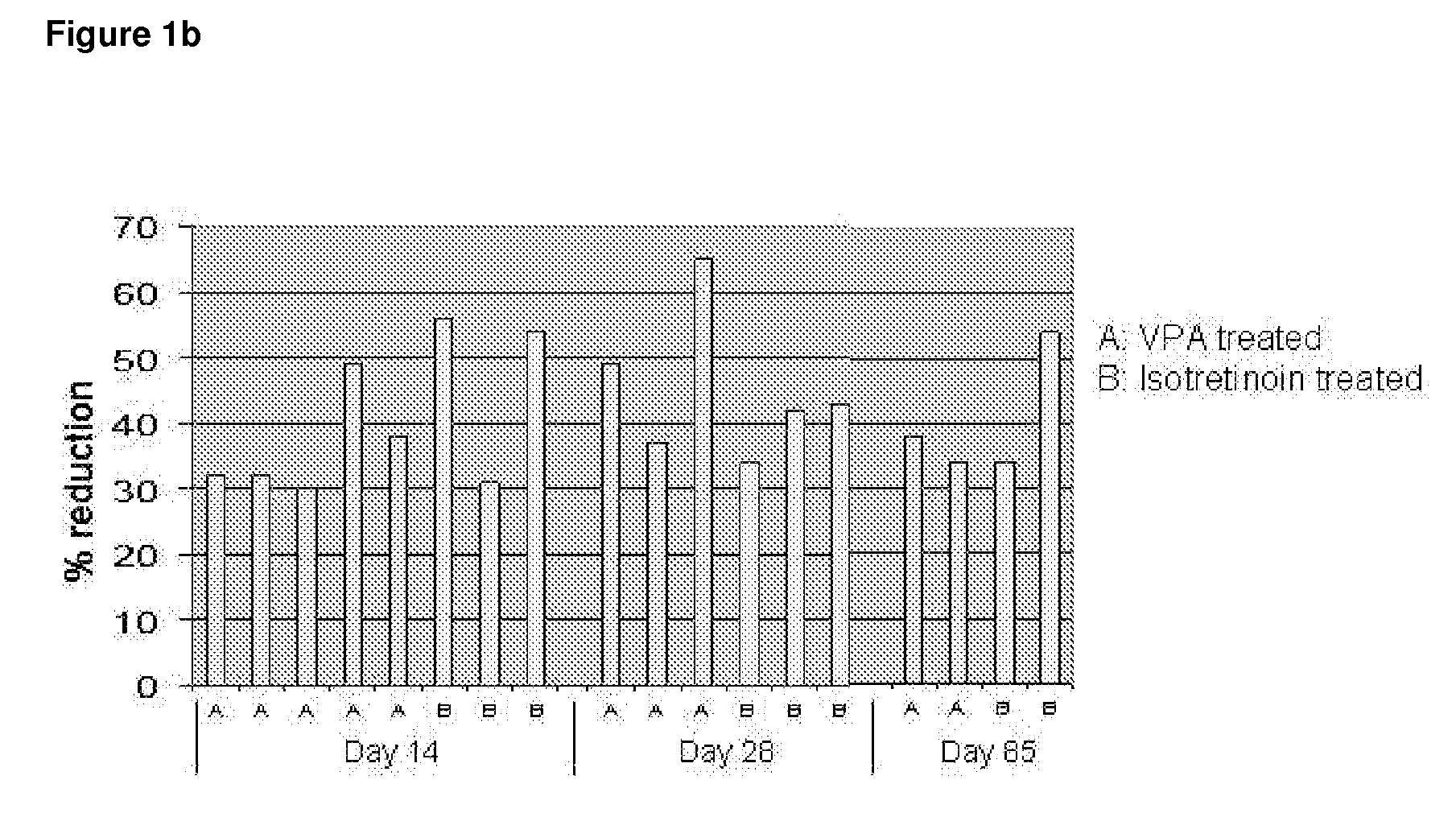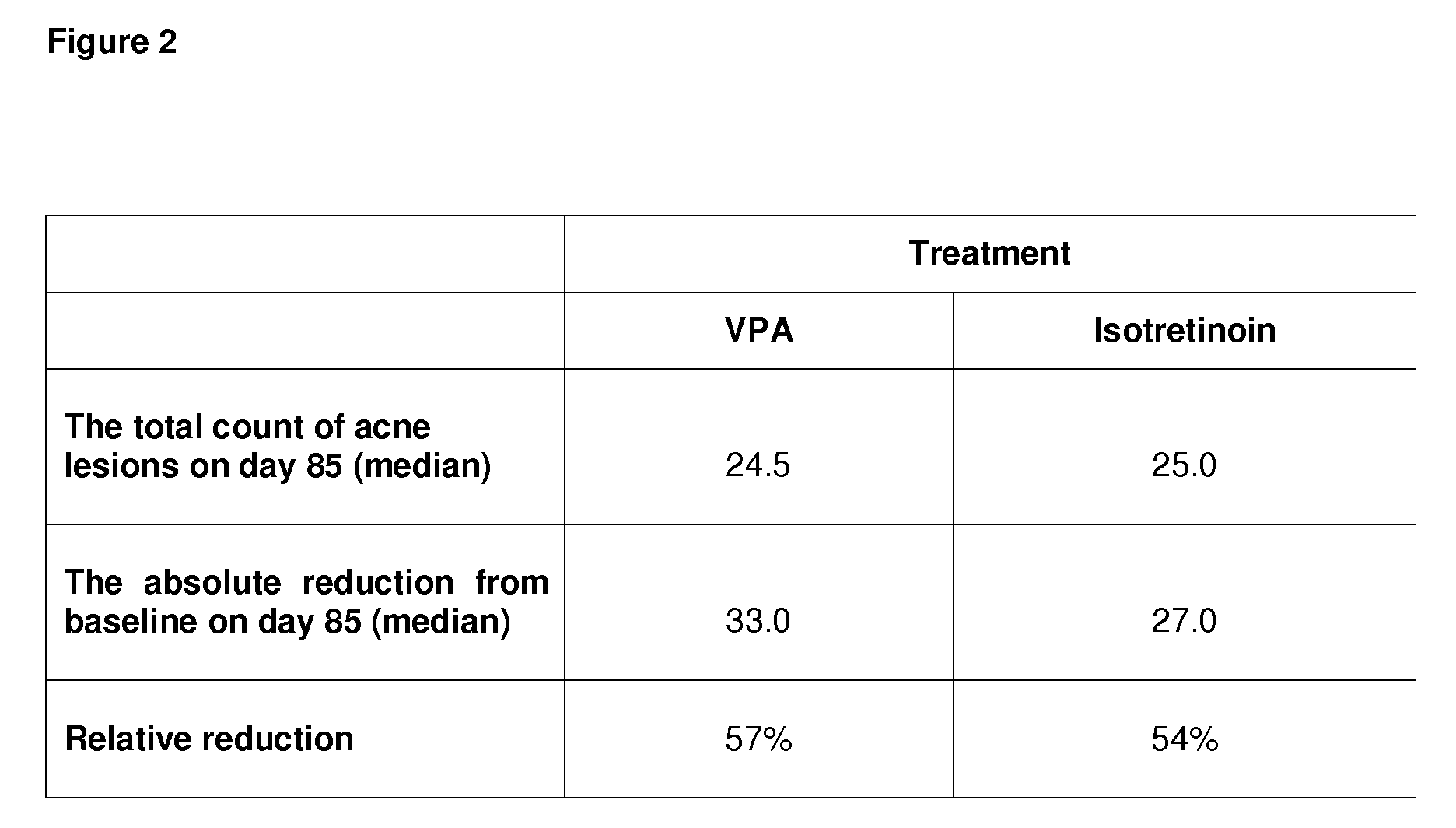Use of valproic acid for the topical treatment of mild to moderate acne vulgaris
a technology of valproic acid and acne vulgaris, which is applied in the direction of antibacterial agents, peptide/protein ingredients, drug compositions, etc., can solve the problems of devastating and potentially fatal side effects, inability to immediately treat, and destabilisation of the interaction of histones with dna, and achieve good local tolerability for patients
- Summary
- Abstract
- Description
- Claims
- Application Information
AI Technical Summary
Benefits of technology
Problems solved by technology
Method used
Image
Examples
formulation example 1
[0160]
White mineral oil20Cetyl Alcohol24Cetomacrogoll0006Valproic Acid>0.1, e.g., 0.1 to 6White vaselineadd to 100
formulation example 2
[0161]
Zinc Oxide25Starch25Valproic Acid>0.1, e.g., 0.1 to 6White vaselineadd to 100
formulation example 3
[0162]
White vaseline25Cetyl Alcohol10Tween 605Glycerin10EDTA0.2Perfume (optionally)2 dropsSodium Valproate>0.1, e.g., 0.1 to 6Hidistilled Wateradd to 10
[0163]The various embodiments described herein can be combined with each other.
FIGURES
[0164]FIG. 1a: Photo Documentation of Acne Vulgaris Patients Before and after Treatment with Topically Applied VPA
[0165]FIG. 1a shows representative photos taken from patients with acne vulgaris before and after 12 weeks of topical treatment with VPA (Patient 1, 2 and 3) or after topical treatment with the retinoid comparator drug isotretinoin (Patients 3 and 4). The lesions seen in these patients before start of treatment (d1; day 1) are displayed on the left (see circles indicating lesion area). These lesions are therapeutically successfully treated as can be seen after the end of treatment on the right (d85; day 85).
FIG. 1b: Time to Reduction of the Total Counts by ≧30% of all Acne Lesions
[0166]FIG. 1b shows that of the patients that have been tr...
PUM
 Login to View More
Login to View More Abstract
Description
Claims
Application Information
 Login to View More
Login to View More - R&D
- Intellectual Property
- Life Sciences
- Materials
- Tech Scout
- Unparalleled Data Quality
- Higher Quality Content
- 60% Fewer Hallucinations
Browse by: Latest US Patents, China's latest patents, Technical Efficacy Thesaurus, Application Domain, Technology Topic, Popular Technical Reports.
© 2025 PatSnap. All rights reserved.Legal|Privacy policy|Modern Slavery Act Transparency Statement|Sitemap|About US| Contact US: help@patsnap.com



